What's New
Displaying results 2871 - 2880 of 4924
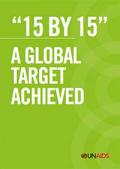
Resource | Publications,
In 2012, the Treatment 2015 initiative was launched, which aimed to redouble efforts to achieve the global target of reaching 15 million people with HIV treatment by 2015. Determined to achieve a highly ambitious global treatment target by the agreed deadline, UNAIDS called for concerted global action to increase the speed of HIV treatment scale-up, enhance the programmatic focus on those most in need, and foster innovation in HIV testing and treatment approaches.
Emerging three years after the launch of Treatment 2015, this report celebrates the world's achievement of this historic milestone, which is saving more lives than ever before. As this report reveals, we have indeed learned how to do better in bringing HIV treatment to those who need it.
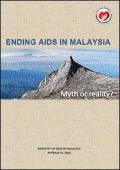
Resource | Publications,
The development of AIDS Epidemic Model for Ending AIDS in Malaysia marks another important milestone in the country’s unswerving commitment in shaping effective and sustainable response to the epidemic. To date, the country has notched many successes through its determined leadership aimed at reversing and halting the epidemic. New HIV infection rate has declined by half, falling from 22 per 100,000 populations in 2000 to 11 per 100,000 populations in 2009. The number of new infections have been stable in the past five years though it edged up in 2010.
Our almost three-decade long response to the HIV epidemic without signs of complacency has enabled us to achieve the MDG 6 target of reducing by half the proportion of new HIV infections. We need to build on these successes and maintain the momentum. The challenge is to sustain the achievement and embark on the fast track strategy to close the book on AIDS epidemic by 2030 or earlier, the first effort of its kind in the country. To achieve this goal, a powerful yet realistic tool such as the AIDS Epidemic Model (AEM) is pivotal.
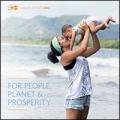
Resource | Publications,
In 2015, UNFPA began analysing how its programmes in 155 countries and territories will be critical to achieving key Sustainable Development Goals and targets and matching objectives of the UNFPA Strategic Plan 2014–2017 with those set forth in the 2030 Agenda. UNFPA also mapped the links between the objectives of the Programme of Action of the International Conference on Population Development and the Sustainable Development Goals and related targets.
An initial review of UNFPA programmes and objectives identified clear links with 12 of the 17 Sustainable Development Goals, especially Goal 3, to ensure healthy lives for all at all ages, Goal 4, to ensure inclusive and equitable education, and Goal 5 to achieve gender equality and empower women and girls. UNFPA programmes that empower women and young people are also critical to achieving Goal 1, to end poverty in all its forms everywhere.
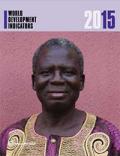
Resource | Publications,
World Development Indicators (WDI) publication is a collection of time-series data for 214 economies, with many indicators going back more than 50 years. WDI provides cross-country comparable statistics about development and people’s lives around the globe. It is divided into six sections -- World View, People, Environment, Economy, States and Markets, and Global Links. New online tables, previously published in the book, are now available from wdi.worldbank.org/tables and they provide data from the most up-to-date database.
The year 2015 is when the world aimed to achieve many of the targets set out in the Millennium Development Goals. Some have been met. The rate of extreme poverty and the proportion of people without access to safe drinking water were both halved between 1990 and 2010, five years ahead of schedule. But some targets have not been achieved, and the aggregates used to measure global trends can mask the uneven progress in some regions and countries. This edition of World Development Indicators uses the latest available data and forecasts to show whether the goals have been achieved and highlights some of the differences between countries and regions that underlie the trends.
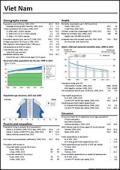
Resource | Data Sheets,
Statistical Yearbook for Asia and the Pacific 2015 - facts and trends at the outset of the 2030 Development Agenda, which provides a first snapshot overview of development trends aligned with the new 2030 Agenda for Sustainable Development. This information will help to ensure better, more informed decision-making and will directly support the efforts of governments, development partners, and the people of Asia and the Pacific to successfully implement the ambitious goals and targets of the 2030 Agenda.
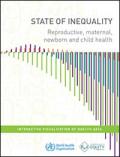
Resource | Publications,
The report reveals that significant inequalities exist in low- and middle-income countries in the area of reproductive, maternal, newborn and child health. The good health of women, infants and children is essential for sustainable development, and there is still much work to be done. Discussions will increasingly call into question how efforts to improve reproductive, maternal, newborn and child health can achieve early and accelerated progress among those who are falling behind.
This State of inequality report helps to focus the monitoring and reporting of health inequalities, and provides comprehensive information on the state of inequality in reproductive, maternal, newborn and child health in low- and middle-income countries.
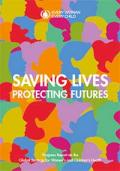
Resource | Publications,
The era of the Millennium Development Goals (MDGs) has witnessed dramatic and unprecedented progress in reducing child and maternal deaths. As a result, 6.4 million fewer children died in 2013 compared to 1990, and maternal deaths have been cut by almost half. By building on these gains and mobilizing additional resources, it is clear that the world possesses the means to make preventable deaths among women and children a thing of the past, laying the foundations for a healthier, more secure and more equitable world.
A pivotal moment occurred in 2010, when the United Nations Secretary-General launched the Global Strategy for Women’s and Children’s Health (Global Strategy), primarily to accelerate progress towards achievement of MDGs 4, 5 and 6, which were lagging furthest behind. As a result of five years of hard work and innovative partnership under the Every Woman Every Child movement, the momentum for progress and change has grown steadily. Our task now is to nurture and build on this forward motion and on the lessons learned, until we finally end the preventable deaths of women, newborns, children and adolescents in all parts of the world.
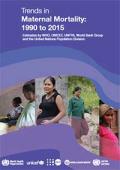
Resource | Publications,
Millennium Development Goal (MDG) 5 Target 5A called for the reduction of maternal mortality ratio by three quarters between 1990 and 2015. It has been a challenge to assess the extent of progress due to the lack of reliable and accurate maternal mortality data – particularly in developing-country settings where maternal mortality is high. As part of ongoing efforts, the WHO, UNICEF, UNFPA, World Bank Group and the United Nations Population Division updated estimates of maternal mortality for the years 1990, 1995, 2000, 2005 and 2015.
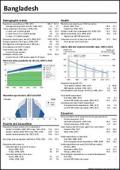
Resource | Data Sheets,
Statistical Yearbook for Asia and the Pacific 2015 - facts and trends at the outset of the 2030 Development Agenda, which provides a first snapshot overview of development trends aligned with the new 2030 Agenda for Sustainable Development. This information will help to ensure better, more informed decision-making and will directly support the efforts of governments, development partners, and the people of Asia and the Pacific to successfully implement the ambitious goals and targets of the 2030 Agenda.
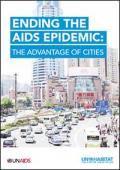
Resource | Publications,
Urbanization is changing the way we live and work and how we approach problems and think about the future. Already the majority of the world’s population lives in urban areas, and by 2050 it is projected that seven in 10 people will live in cities and municipalities.
There are important reasons why people are choosing to live in urban areas. Cities are sources of economic growth and prosperity, serve as centres of innovation and offer extraordinary educational, cultural and recreational opportunities. Urban areas often have greater success in tackling difficult challenges, due to cities’ comparatively greater concentration of services, creativity and productive capacity.
This report includes examples of cities in every region that are displaying courageous, innovative, transformative leadership on AIDS. As of August 2015, more than 100 cities have formally joined as partners in the Fast-Track Cities Initiative, pledging to take focused action to speed the day when the epidemic is no longer a public health threat.





